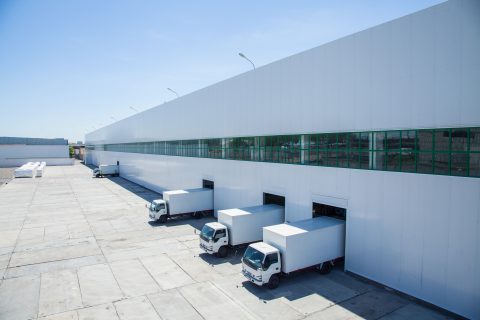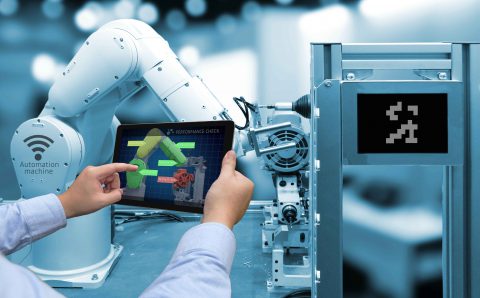Freight, Logistics and Warehousing
Faster, Better, Cheaper
Advances in technology herald exciting improvements across every aspect of the supply chain, promising greater efficiency and helping streamline logistics. “Efficiency plays a massive role in our industry,” says Peter Schmidt-Löffler, CEO of CFR Freight. “From when an order is placed, through the manufacturing process until the end product is on the shelf ready for the consumer, every step of the way is important and needs to be efficiently managed.”
This complex and multifaceted industry provides endless opportunities for technological advances.
“The industry is moving towards crowdsourcing independent drivers, automation, crowdsourced hubs and faster delivery,” says Ashley Arendse, head of human resources at Picup Technologies.
Some of the most interesting developments are in the arenas of materials handling, last mile and big data. And, of course, we simply can’t ignore the buzzwords on everyone’s lips: blockchain and 3D printing.
Materials handling
Increased innovation in warehouse robotics is revolutionising the materials-handling sector of the industry. To remain competitive in today’s environment, companies must operate at maximum efficiency, optimised functionality and with effective resource utilisation to ensure profitability and service-level adherence.
“The efficient management of a warehouse results in optimised processes that directly impact and contribute to the goals of cost containment, cost reduction and service improvement,” says Lucile Langrish-Smith, managing director of Jungheinrich South Africa. “Be it using the forklift for the right application (bigger is not always better but can certainly be more expensive), finding the right fuel technology for the forklifts, optimisation of space through the use of stacker cranes rather than a space-taking warehouse and many forklifts, looking at semi or full automation of machines – there are many different ways technology can increase the efficiency of the intralogistics component of the industry.
“Jungheinrich is leading the way with a one-stop-shop solution for businesses and also some-state-of-the art technologies, like our innovative lithium-ion batteries, which save time (changing time mostly), space (no need for battery bays) and cost (the costs of changing batteries – there is no longer any need for spare batteries and the lifespan of the batteries is greatly increased).” These batteries are virtually maintenance-free and don’t emit gas, making them environmentally friendly as well.
Automated transport has its pitfalls on the open roads, but in the warehouse setting robotic solutions can introduce automation to increase accuracy and reduce time spent retrieving goods, all without any structural alterations. Jungheinrich has also pioneered easyPILOT Follow for order picking, which allows the machines to follow the pickers, again saving time and money by improving efficiencies. They also offer a range of automated trucks that connect to any warehouse-management system in any warehouse.
“This means that a swift and easy connection to more than 1 000 different warehouse-management systems is possible, so businesses can integrate automation at a later stage without having to reinvest in a new warehouse-management system,” says Langrish-Smith.
“Supported by a very high level of research and development in Germany and continuous search for innovation, Jungheinrich can offer an end-to-end solution in warehousing. From the material-handling requirement – now with a big push for more effective battery sources like lithium ion – or automated trucks, to the use of stackers for space savings, mini-load and conveyors, we can provide it all in house.”
The cherry on the top of these advances will surely be the perfection of true robotic picking, where robots are able to pick and pack orders from conventional racking, reducing both the time and the cost of traditional materials handling. Watch this space…
Last-mile innovations
Many refer to this aspect of the industry as “the Uberisation of logistics” and there are several examples of this type of technology being used in the industry. In the age of increased online shopping, there is lots of room for innovation in the methods of delivering products to consumers. Uber itself has launched Uber Freight, an app that helps carriers and their drivers book loads at the touch of a button.
Other potential delivery innovations include publicly located “smart lockers” into which deliveries are made to be later collected, which could revolutionise the process of returning unwanted purchases. This is a very real challenge facing online merchants, especially those selling clothing where the first time the consumer sees and tries on the item is after the purchase and delivery is complete, so an efficient return system is crucial.
In addition, both Amazon and Walmart have plans for airborne fulfilment centres from which drones can be launched for local deliveries. But what are local companies doing to ensure they remain at the forefront of these industry developments?
“South Africa needs to keep up with international standards in order not to lose market share to some of our neighbours,” says Schmidt-Löffler. “Logistics costs in SA are very high compared to some other countries: our rail infrastructure needs to be looked at, trucks need to come off the road and port efficiencies are not where they should be. I have no doubt that South Africa can step up to the plate through collaboration of all stakeholders in the supply chain.”
One local company that has stepped up is Picup Technologies, which provides on-demand and national delivery at the click of a button and is disrupting the traditional last-mile logistics model.
“Consumers no longer willing to accept long turnaround times for their online purchases are turning to e-tailers with more efficient delivery options and who can provide them with accurate information regarding their delivery status, forcing industry players to provide accurate real-time tracking information, reliable delivery, superior service, all while protecting their profit margins,” says Arendse.
The Picup crowdsourced driver network provides clients with instant access to a fleet of drivers, giving them the ability to provide an on-demand same-day solution to their own clients.
“At Picup we’re getting ready to deploy our Enterprise Solution powered by our PARCS model (parcel and rate calculator), which calculates and optimises the delivery fee and driver earnings in real time, ensuring the best rate for the driver, client and the business,” says Arendse.
“Last-mile delivery has become an incredibly complex operation for companies whose systems have been built according to the traditional logistics model. Our Enterprise Solution is tailored for clients with a high volume of parcels that need to be delivered same day, and who need to provide their customers with real-time notifications and a support team whose goals are aligned with theirs.”
With state-of-the-art technology and API integrations, Picup can consolidate deliveries online and create optimised dynamic routes for their drivers and e-commerce clients. “This ensures a seamless process from order placement to delivery at your front door,” says Arendse. “We are also currently working on providing a white-label solution for clients with their own fleets that will mitigate some of the challenges of the last mile.”
Information sharing and big data
“The logistics industry has not yet seen what can be done through proper information sharing,” says Schmidt-Löffler. “Visibility through transparent information exchange is probably one of the most important differentiators. We, as the CFR group of companies, have over the years invested massively in IT. Our clients, the clearing and forwarding agents, need live tracking of all cargo movements, whether by air, sea, rail or road. Visibility is the key – whether it be through live GPS tracking or blockchain technology, the game is on and the companies that come up with the best platforms will be ahead of the rest.”
“Technology enables the industry to gather large amounts of big data from myriad sources across the supply-chain network,” says Langrish-Smith. “Large-scale analysis of this information can assist companies in the identification of trends, opportunities, and areas of improvement and innovation. The analysis of this big data also forms the foundation from which forecasts, future initiatives and long-term strategies can be formulated.”






 Sign-up and receive the Business Media MAGS newsletter OR SA Mining newsletter straight to your inbox.
Sign-up and receive the Business Media MAGS newsletter OR SA Mining newsletter straight to your inbox.